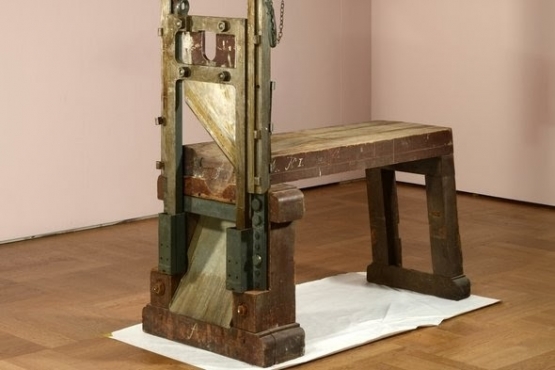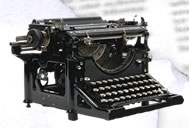On the evening of March 26, 1944, fifteen O.S.S. agents were executed following a failed raid on Italian soil to blow-up an Axis railroad tunnel. The sabotage mission was in support of the allied attack taking place further south at Monte Cassino (Battle of Monte Cassino, January 17, 1944 – May 19, 1944) and had the tunnel been successfully blown, supplies to the defending Germans would have been cut off.
This YANK article reported on the first war crime trial of the post World War Two era: the trial of German General Anton Dostler (1891 - 1945), who gave the order to execute the O.S.S. prisoners. In his defense, General Dostler insisted that he was acting under the orders of General Gustav von Zangen, who denied the claim.
A 1939 magazine article that reported on the assorted activities of Japanese spies operating around the Tijuana/San Diego region (their presence was well-documented by the Mexican military in addition to the F.B.I.).
A year and a half before the Pearl Harbor attack, Naval Intelligence sold a Japanese agent some bogus plans of the naval installation - more about this can be read here.
This is the story of Harry Sawyer (real name William G. Sebold), a German immigrant to American shores. On a return trip to Germany to visit family in 1939, Sawyer was very reluctantly forced into service as a spy for the German SD (Sicherheitsdienst), the intelligence arm of Himmler's SS. Sawyer was schooled briefly in the ways of spying, told what was expected of him and then let loose to set sail home.
Upon his return, Sawyer quickly explained his problem to J. Edgar Hoover, who masterfully turned the situation to his advantage, an advantage that led to the capture of 32 Nazi spies.
Click here to read about "Lucy" - Stalin's top spy during the Second World War.
Writing ten years after D-Day, Sonia D'Artois recalled her experiences as a spy and saboteur in Nazi-occupied France:
"...I began my mission in wartime France as a British secret agent. Colonel Maurice Buckmaster had told me what my assignment was:"
"You will parachute into France with a wireless operator and a demolition specialist. The drop will be 40 miles from Le Mans, where Rommel's army is concentrated..."
Printed on the attached two pages is an informative history of the vital contributions that were made by the Japanese-Americans who served in the O.S.S. behind enemy lines during the Burma-China campaign. Additionally, the men who toiled on behalf of the Southeast Asia Translation and Interrogation Center are also praised. This article does not hold back in giving credit where it is due - many are the names that were remembered with gratitude.
This was more than likely the very first mainstream magazine article to address the vital contributions that the Office of Strategic Service made in beating the Axis powers. It appeared on the newsstands just about six weeks after the end of the Second World War and lists various key operations and triumphs that had heretofore been secret.
The story of the German master spy who grimly plotted for sixteen years to destroy the pride of the British Navy...
"This is the story of how Russia got military secrets from the United States during W.W. II. It is a story that has little to do with the spy ring that congressional committees are trying to prove existed during the war period
(The Gouzenko Affair: read about it here) . But it does throw light on the methods and purposes of the so-called 'spy ring'".
"Military information was going to Russia as a matter of routine, by official channels, on an organized basis, all during the period when United States Communists and their friends were supposed to be spying out bits of information to send... As an ally of the U.S. in the war against Germany, Russia had free access to far more information than the so-called 'spy ring' claims..."
Siegrid von Laffert, Edit von Coler and the exotic dancer LaJana had four things in common: they were all carbon-based life forms, they were all all German women, they were all beautiful and they were all Nazis spies:
"These women spies are called the 'Blonde Battalions'. Chosen for their physical attractiveness, they are usually between 18 and 22 years of age. Members of the 'Blonde Battalion' are admitted to the Gestapo school in Altona, near Hamburg and after they are sent out to perform their work as efficient machines, with rigid discipline and precision..."
This magazine article was filed during the suspenseful phony war that was waged between Poland and Germany over the Danzig issue. It reported on the beheading of two German women convicted of spying on behalf of a Polish cavalry officer by the name of Baron Georges Von Sosnowski:
"In London, THE NEWS CHRONICLE, Liberal Party organ, declared that the beheading of the two women was 'disgusting savagery', and was not the first evidence of 'a strain of sheer barbarism in the Nazi creed..."

When the twenty-year-old editor at
Yank Magazine wrote this editorial at the close of W.W. II he was expressing a belief that was shared equally with the members of the W.W. I generation who prosecuted and managed the war from Washington - and that was an understanding that the world is a far more dangerous place than we thought it was and it needs to be watched. This 1946 article is similar to other columns that appeared in 1947 (when the CIA was established) and 1952 (when the NSA opened its doors) in that it announced the creation of a government agency intent on global espionage in order to have done with all future concerns that another Pearl Harbor was in the planning.
"The eight Nazi agents, who landed from U-boats on the shores of of Long Island and Florida, planning to cripple American war production, are in jail here [Washington, D.C.] under heavy guard, awaiting military trial on four charges that carry the death penalty."
"Suddenly last June, a Federal grand jury in New York City hoisted the curtain on 'America's most significant spy prosecution since the [First] World War' by indicting 18 persons for participating in a conspiracy to steal U.S. defense secrets for Germany. Subsequently, only four of the 18 could be found for trial. The others, including two high officials of the German War Ministry, were safe in - or had escaped to - the Fatherland."
"Following swiftly on the smashing of a spy ring in this country, a Federal grand jury in Brooklyn, N.Y., last week leveled a unique indictment at the government of Nazi Germany: it baldly accused the Third Reich of conducting, in ten countries stretching from Peru to China, a worldwide espionage plot directed against the United States."
J. Edgar Hoover tells how this ring was broken up in this 1951 article...
"Colonel William J. Donovan and Edgar Mower, writing of fifth-column activities at the direction of Frank Knox, Secretary of the Navy, charged Fritz Wiedemann [as having been] praised by Hitler for helping to spike American legislation to aid the Allies in 1939."
Numerous nasty remarks were quoted in the attached article concerning the German Consul General in San Francisco, Fritz Wiedemann (1891 - 1970), but the journalist who penned the article could not possibly know that Wiedemann was at that time spilling his guts to the FBI. Having served under Hitler for some time as adjutant, by 1940 Wiedemann had denounced his devotion to the Nazi Party and told Hoover all that he Knew about Hitler and what the world could expect from the man.
In 1940, Japanese spies made the mistake of confiding in Wiedemann - more about this can be read here.
Here is an interesting article by an American counter-espionage agent who tells several stories about the various Japanese spies he had encountered during the early months of the war. He wrote of his his frustrations with the civil liberty laws that were in place to protect both citizen and alien alike.
It was Mexican president Manuel Avila Camacho who chased the spies out of his nation - click here to read about it...
From the 1940 editorial pages of
PM came this column by Henry Paynter (1899 - 1960) who wrote amusingly about the many frustrations facing Japanese spies in North America.
"The identity of almost every Japanese spy or saboteur has been known to U.S. authorities. Every instruction they have received or sent has been decoded..."
At the height of their irritation, they confided in the German Consul-General stationed in San Francisco - only to learn after the war that he was an FBI informant (you can read about him here).
"They were landed off the Branffshire coast by a German seaplane and rowed ashore in a rubber boat in darkness.
Both were arrested a few hours later. Both had pistols, large sums of British currency, food and radio transmitting and receiving apparatus."
The FBIS - short for Foreign Broadcast Intelligence Service - is the organization that listens to the world's radios for Uncle Sam. It's monitoring station in Washington has, besides editors and annalists, some sixty fantastic linguists on its staff - people who are fluent at anywhere from three or four - up to a couple of dozen, languages apiece. Their job is to intercept and translate the shortwave broadcasts of Rome, Berlin, Vichy and a score of lesser stations, which daily pour out Axis propaganda in more languages than were ever spoken in the Tower of babel."
The FBI had been tangling Axis spies throughout the mid-to-late Thirties, but with the December 8, 1941, declaration of war the FBI was emboldened with far greater powers. This explains why Director Hoover exclaimed "that his agency had just completed the busiest year in its history."
Before the era of the World Wide Web, intelligence agencies had to rely on their own flunkies to gather all meteorological information they could find about a particular weather system; this explains why so many Axis spies were found with weather data among their possessions.
"From businesslike German schools come the professional spy and the saboteur - cunning, ruthless, superbly trained for their specific tasks. They'll be hard to stop, says Mr. Hoover, and catching them - in time - is a job in which every American can give the FBI a hand."
This is a profile of Admiral Wilhelm Canaris (1887 – 1945), Hitler's man in charge of sabotage and espionage. It tells the story of what he was up to during the First World War and throughout the Twenties; how he greased the wheels in Belgium, Norway, Denmark and France to make the invasion of those nations a bit easier. It explains how impressed Hitler was with his abilities and how suspicious Himmler was at the same time.
Here is told the tale of Countess Grace Buchanan-Dineen, a Detroit hostess and amateur Nazi spy. She was posted to Motor City in order to report on all the goings-on there to her pals in Berlin. The FBI turned her shortly after her her arrest and she began spying for them.
"At the end of last year, our authorities discovered that there were nearly one hundred Japanese leg men in New England reporting to the Boston office. More than five hundred in Washington; something above two hundred in Chicago; twenty-five hundred were in the New York area; twenty-five in Cleveland; thirty-eight in Detroit; eighty-odd in Florida, and so on out to the West Coast where around three thousand Japanese are 'on duty' from San Diego to Port Washington."
